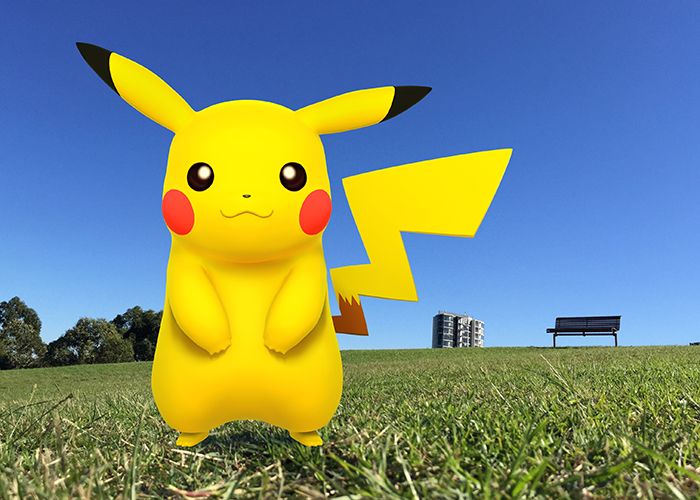
International phenomenon Pokémon Go has set the spotlight on Augmented Reality (AR) and its potential to transform our spaces and our lives.
If Keiichi Matsuda’s video AR simulation Hyper-Reality hasn’t yet crossed your newsfeed, it’s worth a look.
For six unnerving kaleidoscopic minutes Matsuda explores how we might see the world in the not-so-distant future.
With Pokémon Go players exploring the virtual world in our cities, parks and public spaces, the game is a fascinating case study for the unexpected impacts of AR.
StreetChat asks a landscape architect, architect, academic, futurist and millenial to explore what this technology could mean for our cities.
Below are excerpts from their full responses, which you can find in our White Paper: Pokémon Go, Augmented Reality and the Future of Our Cities.

Download your free White Paper.
 Dick Nugent, Architect
Dick Nugent, Architect
Associate Director at Conybeare Morrison
“Pokémon Go suggests that a layering of the virtual onto the real can be a way of bringing people into a common place or a common activity.
“This suggests, perhaps, that the design of public space will need to respond to this expanded, yet somewhat less defined social role.
“As a ‘form follows function’ approach to defining public space becomes less relevant, the timeless approach to the design of public space that preceded the modern era, where form and symbol take precedence over functional identity, may reassert itself.
“The narrative of place will then become the defining identity and drive the physical expression …”
 Anthony Brookfield, Landscape Architect
Anthony Brookfield, Landscape Architect
Principal at HASSELL
“Observing the emergence of AR technologies from my position as a landscape architect, it seems there is tremendous potential to significantly re-frame how we use, appreciate and experience the public realm.
“The ability to observe at a glance embedded information such as hotel room availability, office vacancies, train timetables and even restaurant table availability will be very popular.
“Even more elevating is being able to learn of the rich and layered histories within our great museums and which hide behind our city buildings, streets and open spaces.
“The activation and tourism potential for this technology does seem to be immense and it will require place managers to come together with major technology providers to give people an experience they will find invaluable.
“I am keen to see this technology evolve in a balanced fashion …”
 Dr Gillian Lawson, Academic
Dr Gillian Lawson, Academic
Head of Landscape Architecture, Queensland University of Technology
“Taking computing power to the street has already become common place but Pokémon Go now offers citizens the ability to not only create their own decision support tools within the city, but to engage in social ‘play’ in both augmented reality and physical reality at the same time.
“For landscape architects, urban designers, planners and architects, this offers some interesting challenges in terms of place-making for the new phenomenon of mixed reality …”
 Mark Pesce, Futurist
Mark Pesce, Futurist
Inventor, broadcaster, MarkPesce.com
“Pokémon Go immediately highlighted the need for some sort of zoning to control how real space can be repurposed by AR applications.
“A restaurant may find it highly lucrative to have a PokéStop inside, but a private residence would find it greatly annoying to troupes of visitors coming at all hours, and in some situations, game playing is absolutely inappropriate or dangerous and shouldn’t happen at all.
“None of that was visible before Pokémon Go, but is completely obvious after it.”
Tilly Caddy, Millenial
Landscape Architect, Emerge Associates
“The recent explosion of Pokémon Go hit the streets, public space and media hard. So hard that 1000sqm of turf at Kings Park in Perth has been replaced due to the increase in foot traffic.
“Unlike some, I don’t see the replacement of turf as a negative. If Pokémon Go is getting people off the couch to visit spaces they usually wouldn’t then surely the positive benefits for our city outweigh the negatives.
“Going forward AR presents many opportunities (some already in place) for landscape architects to evolve our public spaces, add additional layers of meaning, engage in storytelling and encourage space activation.
“At the end of the day our work could potentially double, triple, quadruple if there is the possibility to design both the physical and virtual spaces …”

Download your free White Paper:
Pokémon Go, Augmented Reality and the Future of Our Cities.
(Select ‘Fit to Page’ before printing.)


 Dick Nugent, Architect
Dick Nugent, Architect Anthony Brookfield, Landscape Architect
Anthony Brookfield, Landscape Architect Dr Gillian Lawson, Academic
Dr Gillian Lawson, Academic Mark Pesce, Futurist
Mark Pesce, Futurist







